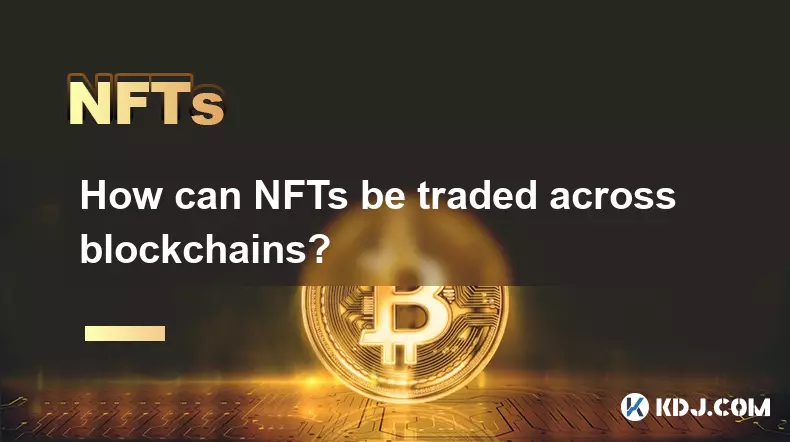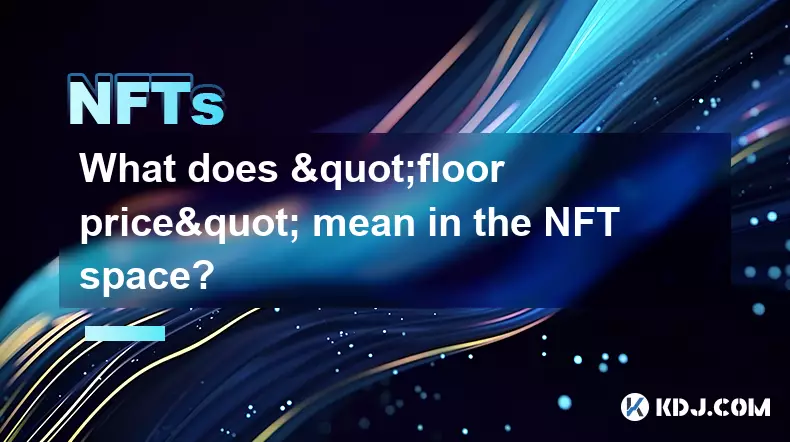-
 bitcoin
bitcoin $109523.663807 USD
-0.13% -
 ethereum
ethereum $4019.526508 USD
2.06% -
 tether
tether $1.000482 USD
0.00% -
 xrp
xrp $2.776815 USD
0.18% -
 bnb
bnb $958.942396 USD
0.12% -
 solana
solana $204.294698 USD
3.84% -
 usd-coin
usd-coin $0.999693 USD
0.00% -
 dogecoin
dogecoin $0.232115 USD
2.09% -
 tron
tron $0.338028 USD
0.84% -
 cardano
cardano $0.790920 USD
1.50% -
 hyperliquid
hyperliquid $44.871443 USD
5.60% -
 ethena-usde
ethena-usde $1.000322 USD
0.04% -
 chainlink
chainlink $21.034165 USD
2.60% -
 avalanche
avalanche $28.794831 USD
-0.54% -
 stellar
stellar $0.360466 USD
1.24%
What are NFT royalties for creators?
NFT royalties enable artists to earn ongoing income from resales via smart contracts, though inconsistent marketplace support challenges creator sustainability.
Sep 13, 2025 at 07:54 pm

Understanding NFT Royalties in the Digital Art Economy
1. NFT royalties are a mechanism that allows creators to earn a percentage of the sale price each time their digital artwork is resold on a secondary marketplace. Unlike traditional art, where artists typically profit only from the initial sale, NFTs enable ongoing compensation through smart contracts embedded directly into the token.
2. These royalties are automatically enforced by blockchain protocols, ensuring that every resale triggers a payment to the original creator’s wallet. The percentage varies, commonly ranging between 5% and 10%, though some platforms allow creators to set custom rates within defined limits.
3. The enforcement of royalties depends on the marketplace’s compliance. While some platforms honor the royalty terms encoded in the NFT, others have started to bypass them, sparking controversy within the creator community about fairness and sustainability.
4. Royalty payments are processed in cryptocurrency, typically the native token of the blockchain on which the NFT was minted, such as ETH on Ethereum or SOL on Solana. This seamless integration reduces reliance on intermediaries and accelerates payout timelines.
5. The transparency of blockchain ensures that creators can track every resale and verify that royalties are correctly distributed. Public ledgers provide immutable records of ownership transfers and associated payments, increasing trust in the system.
How NFT Royalty Systems Are Implemented
1. Smart contracts serve as the backbone of NFT royalty enforcement. When an NFT is created, the creator specifies the royalty rate and recipient address, which is then encoded into the contract using standards like ERC-721 or ERC-2981 on Ethereum.
2. Marketplaces that support royalty standards read the contract data and automatically allocate a portion of the resale price to the creator during settlement. This process is trustless and requires no manual intervention from buyers or sellers.
3. Not all NFT platforms implement royalty enforcement uniformly. Certain decentralized exchanges and NFT marketplaces have removed mandatory royalty payments, arguing for market efficiency and lower transaction costs, which undermines the original promise of creator compensation.
4. Some projects are exploring dynamic royalty models, where rates decrease over time or vary based on buyer type. These experimental approaches aim to balance creator incentives with market liquidity.
5. Third-party services now offer royalty enforcement layers that can be integrated across platforms, attempting to standardize payments regardless of where the NFT is traded. These solutions aim to restore consistency in a fragmented ecosystem.
The Impact of Royalties on Creator Sustainability
1. NFT royalties have empowered independent artists to generate long-term income without relying on galleries or agents, fundamentally shifting power dynamics in the digital art world. Many creators report that secondary sales have become a significant portion of their earnings.
2. The predictability of royalty streams encourages artists to continue producing high-quality work, knowing they will benefit from increased demand and appreciation of their pieces over time. This financial incentive fosters a more vibrant and competitive creative landscape.
3. Some collectors hesitate to purchase NFTs with high royalty rates, fearing reduced profit margins upon resale. This tension highlights the ongoing negotiation between creator rights and market incentives.
4. Projects that honor royalties often gain reputational benefits, attracting creators who prioritize fair compensation. Communities built around ethical marketplaces tend to emphasize long-term value over short-term gains.
5. As legal frameworks evolve, there is growing discussion about whether NFT royalties could be recognized as enforceable intellectual property rights, potentially extending their reach beyond blockchain-based enforcement.
Frequently Asked Questions
How are NFT royalties paid out?Royalties are automatically sent to the creator’s wallet via smart contracts when a resale occurs on a compliant marketplace. The payment is made in the cryptocurrency used for the transaction, typically without delay or manual processing.
Can NFT creators change the royalty rate after minting?No, once an NFT is minted, the royalty rate is locked into the smart contract and cannot be altered. Creators must set the rate before deployment, making it critical to choose terms carefully.
Do all NFT marketplaces support royalties?No, support varies widely. Platforms like OpenSea and Rarible enforce royalties by default, while others like Blur have opted to let buyers and sellers negotiate or waive them entirely, leading to inconsistent payouts.
Are NFT royalties taxable income?Yes, in most jurisdictions, royalty income from NFT resales is considered taxable. Creators are responsible for reporting these earnings and complying with local tax regulations, similar to other forms of self-employment or investment income.
Disclaimer:info@kdj.com
The information provided is not trading advice. kdj.com does not assume any responsibility for any investments made based on the information provided in this article. Cryptocurrencies are highly volatile and it is highly recommended that you invest with caution after thorough research!
If you believe that the content used on this website infringes your copyright, please contact us immediately (info@kdj.com) and we will delete it promptly.
- Bitcoin, mNAV, and Treasury Companies: A New York Perspective
- 2025-09-28 04:25:14
- BNB Price and the Rise of BlockchainFX: The Crypto Presale to Watch
- 2025-09-28 04:25:14
- Trump, WLFI, and the Token Burn: Can Burning Crypto Make it Great Again?
- 2025-09-28 04:45:15
- James Wynn's 3x Leveraged Crypto Gamble: ASTER Airdrop or Bust?
- 2025-09-28 04:45:15
- Vitalik Buterin Sounds Alarm on EU Legislation: Ethereum's Privacy Stance
- 2025-09-28 05:25:12
- XLM Records, Toncoin Utility, BullZilla Presale: Crypto's Next Big Thing?
- 2025-09-28 05:05:12
Related knowledge

How can I determine the authenticity of an NFT project?
Sep 23,2025 at 05:18pm
Understanding the Project Team and Their Background1. Research the identities of the team members behind the NFT project. Verified social media profil...

What's the difference between NFTs and traditional collectibles?
Sep 19,2025 at 12:55pm
Digital Ownership and Provenance1. NFTs are built on blockchain technology, which ensures transparent and immutable records of ownership. Every transa...

How can NFTs be traded across blockchains?
Sep 19,2025 at 12:00pm
Understanding Cross-Chain NFT Trading1. Non-fungible tokens (NFTs) are digital assets that represent ownership of unique items on a blockchain. Origin...

How is NFT rarity calculated?
Sep 18,2025 at 07:54pm
Understanding NFT Rarity Metrics1. NFT rarity is determined by analyzing the uniqueness of individual traits within a collection. Each NFT typically c...

What does "floor price" mean in the NFT space?
Sep 22,2025 at 06:36am
Floor Price: A Core Metric in the NFT Marketplace1. The term floor price refers to the lowest current asking price for any item within a specific NFT ...

How do NFTs help content creators?
Sep 18,2025 at 08:00am
NFTs Empower Creators with Ownership and Monetization1. NFTs provide content creators with verifiable ownership of their digital works, ensuring authe...

How can I determine the authenticity of an NFT project?
Sep 23,2025 at 05:18pm
Understanding the Project Team and Their Background1. Research the identities of the team members behind the NFT project. Verified social media profil...

What's the difference between NFTs and traditional collectibles?
Sep 19,2025 at 12:55pm
Digital Ownership and Provenance1. NFTs are built on blockchain technology, which ensures transparent and immutable records of ownership. Every transa...

How can NFTs be traded across blockchains?
Sep 19,2025 at 12:00pm
Understanding Cross-Chain NFT Trading1. Non-fungible tokens (NFTs) are digital assets that represent ownership of unique items on a blockchain. Origin...

How is NFT rarity calculated?
Sep 18,2025 at 07:54pm
Understanding NFT Rarity Metrics1. NFT rarity is determined by analyzing the uniqueness of individual traits within a collection. Each NFT typically c...

What does "floor price" mean in the NFT space?
Sep 22,2025 at 06:36am
Floor Price: A Core Metric in the NFT Marketplace1. The term floor price refers to the lowest current asking price for any item within a specific NFT ...

How do NFTs help content creators?
Sep 18,2025 at 08:00am
NFTs Empower Creators with Ownership and Monetization1. NFTs provide content creators with verifiable ownership of their digital works, ensuring authe...
See all articles










































































